Abu Simbel
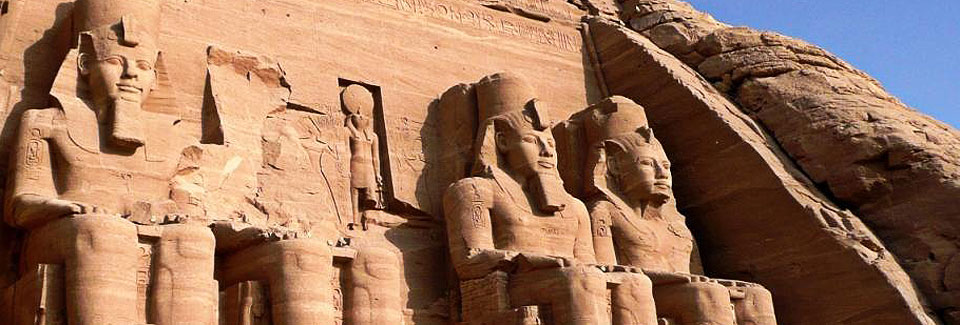
About Abu Simbel
It is said, by Egyptologists, that Abu Simbel took it’s name from a young boy who guided the historical explorers to re-discover this amazing complex.
Part of the UNESCO World Heritage Sites, the whole complex had to be moved in the 1960′s, to avoid it being completely submerged and lost forever, during the creation of Lake Nasser (the reservoir that was formed after the building of the Aswan Dam on the Nile).
The Temples at Abu Simbel, through time, had been partially covered by sand and lay undiscovered until JL Burckhardt, the famous Swiss Orientalist, found them again in 1813. He reported his find to the famous Italian Explorer Giovanni Belzoni who in 1817 managed to dig away the sand and enter the magnificent complex.
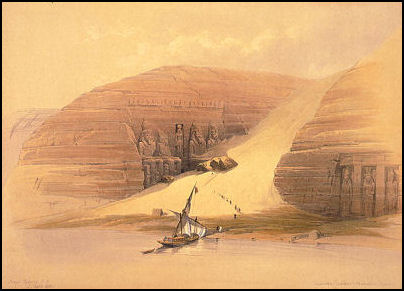
The art work (shown above and below) by the famous Scottish Artist David Roberts gives us an idea of how the temples looked prior to excavation. These sketches (later turned into coloured lithographs) were made during his tours of Egypt between 1838 and 1840.
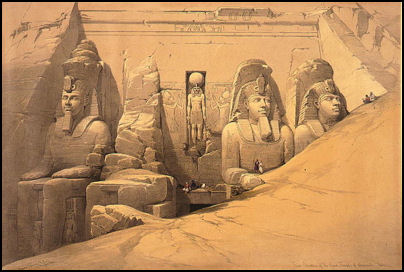
The complex consists of two large Temples, and it’s build started around 1244 BC, taking around 20 years to be completed.
Pharaoh Ramessess II had the Temples carved as a lasting commemoration of his victory during the battle of Kadesh.
The Temples, originally carved out of the surrounding mountain, are said to have been a warning to frighten or intimidate the Nubian Armies of the time.
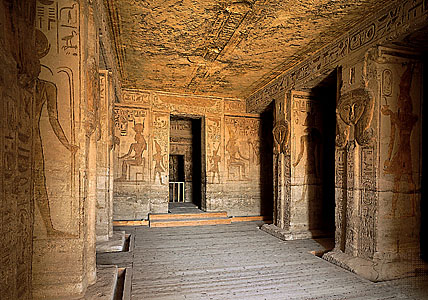
The Great Temple (shown at the top of the page) was dedicated to the gods Ra-Harakhty, Amun, and Ptah.
The inside of the Great Temple (shown left) has an amazingly preserved display of heiroglyphics and carvings
It has four huge 20mtr statues of the Pharaoh, and the facade of the temple, 35 meters wide, is headed by a row of 22 baboons “the watchers of the dawn
The Ancient Egyptians believed that baboons were sacred as they were the helpers of the Sun God Ra, to defeat the nights darkness.
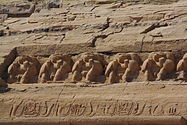
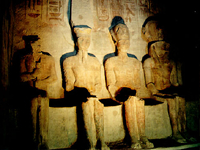
Unbelievably the axis of the temple was designed in such an amazing way as to allow the sun’s ray’s to enter, twice per year (October 20th and February 20th), the inner sanctuary and light three of the four seated statues.
Only the statue of the God Ptah (the god of the underworld) remained untouched by the sunlight, as he was connected to the underworld and always remained in the dark.
The other statues however of Amun-Ra, Ra-Horakhte, and the Defied Ramesses II, lit up in magnificent splendour.
Even the UNESCO engineers preserved this magnificent experience when they moved the temples, and it can still be enjoyed today (although some say it’s a day later than the original dates)
The smaller of the temples is the Temple of Nefertari (Ramesses’ most beloved of his 200 wives).
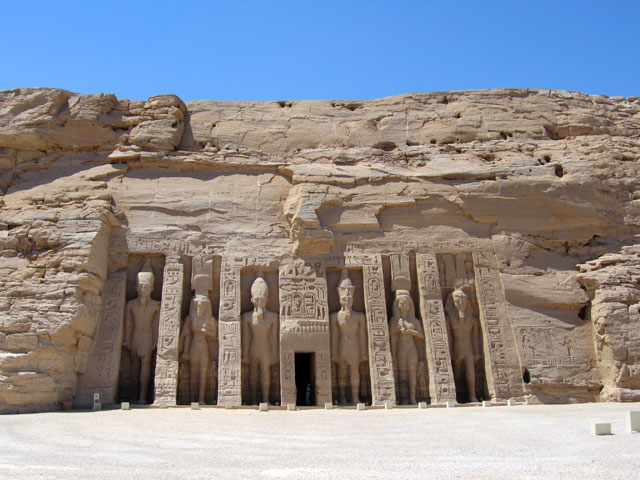
This temple (shown left) was dedicated to the Goddess Hathor.
The front of the temple shows Nefertari either side of the entrance beside her husband Ramessess II.
Never before had a wife been portrayed alongside her husband, on the front of a temple, in this size and splendour.
Relocating the Temples
The Egyptian Government and UNESCO considered many different ways of saving these temples, and architects from all over the world were invited to submit plans to try to find a way of moving the temples.
One of the plans was to cover the temples in a huge underwater glass bubble and use a lift, connected to the surface to bring out of the water.In the end however it was decided that the temples would be cut into over 2,000 blocks which would be numbered and moved then reassembled in the new lake front area.
And so, in 1964, work began to move the whole complex to a new location 65mtr higher and 200mtr further back from the river.
Unbelievably, and painstakingly, at a cost of around USD$40m, the entire site was cut into large 20 ton blocks and dismantled, later to be reassembled at the new location.
Then, an artificial mountain was built and the temples were reassembled into their exact, required, positions.
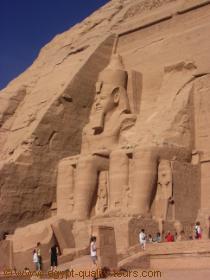
Extra care was taken to ensure that the temples were positioned at the right axis to enable the sun’s rays to enter in February and October to light the inner sanctuary statues, as it would have in its original location.
This was an amazing feat as they had to be sure that the light would come in at a specific area of the temples on a specific time of the year, to light up specific parts of the temple.
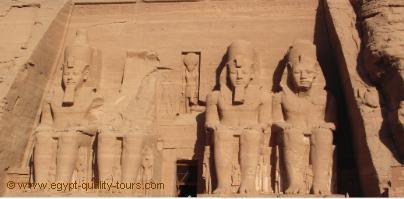
Taking four years, and after a lot of care and considerable attention, the temples of Abu Simbel were finally relocated to their new present site.
Many consider this to be one of the greatest feats of archaological engineering of all time.
Join The Newsletter
To receive our best monthly deals


